Generator Safety Tips That Will Get You Through a Storm and Maybe Save Your Life
In the past decade, carbon monoxide from generators has killed at least 770 people in the U.S. Here's how to use one safely.

By Paul Hope, Tobie Stanger
After a hurricane, tornado, or other storm interrupts your electricity, powering up a generator can help you get your household back on its feet. Even just a small unit that restarts your fridge, runs a few lights, and charges your phones and laptop can feel like a lifesaver.
But because you probably rarely rely on a generator, it’s easy to overlook the basic safety measures that should be routine with such equipment. It’s also easy to get preoccupied with the cleanup work that lies ahead, so you may even be tempted to run a generator in a living space if most of your house is severely water damaged and can’t be saved.
Don’t ever do that.
Running a generator inside or too close to a living space can lead to death or injury from carbon monoxide (CO) poisoning as well as burn injuries resulting from contact with a hot generator. All these happen too often during power outages and storms.
CO Can Kill in 5 Minutes
The greatest danger, according to the Consumer Product Safety Commission, is CO poisoning. Portable generators can produce deadly levels of carbon monoxide, a colorless, odorless, and tasteless gas.
Carbon monoxide can kill you in as little as 5 minutes if the levels are high enough, according to safety guidelines from the National Institutes of Health.
Data from the CPSC show that between 2011 and 2021, at least 770 people in the U.S. died of carbon monoxide poisoning while using portable generators. In 2021 alone, 52 people died in such accidents. And the CPSC says those figures are probably far greater because it’s still collecting data from 2020 and 2021.
To reduce the risk of carbon monoxide poisoning, some new portable generators feature a built-in sensor that triggers an automatic shutoff if CO builds up to dangerous levels in an enclosed space. Some also have engines that emit less CO in the first place. Recent test data from CR shows that these safety features are likely to save lives.
Buy a Generator That Passes CR's Safety Test
Consumer Reports only recommends portable generators that pass our CO Safety Technology test. For a generator to earn an Excellent rating on CO safety, it must have an integrated CO safety shutoff that triggers when the generator is used in an enclosed space. It must also not produce dangerous levels of CO emissions when used in the partly enclosed space that we use for our tests. Only one model we’ve tested, the moderate-sized Ryobi RYi4022X inverter generator, meets that criteria.
Models with a shutoff that works in an enclosed space but are able to produce higher levels of CO with the door open earn a rating of either Good or Very Good for this test, depending upon the levels of CO we record.
Any model without a CO safety shutoff will earn a rating of Poor and won’t be eligible to be recommended by CR. (There’s no Fair rating for CO safety technology.)
Whether you buy a new generator that implements these new safety standards or you’re running an older model without an auto shutoff, we strongly advise that you follow the safety advice below.
Generator Safety Tips
Never run a generator in an enclosed space or indoors. Most generator-related injuries and deaths involve CO poisoning from generators used indoors or in partly enclosed spaces. That includes a basement or garage, two spaces that can capture deadly levels of carbon monoxide. Always place the generator at least 20 feet from the house with the engine exhaust directed away from windows and doors.
If you’re using a generator to keep the lights on during a cleanup effort, “use a working, battery-operated carbon monoxide detector at the same time,” says Ken Boyce, senior director, principal engineering at UL Solutions. “A carbon monoxide alarm provides one more layer of defense against making an innocent but potentially deadly mistake.”
Don’t run a portable generator in the rain. You can buy tents for generators—that keep them shielded but still well ventilated—online and at home centers and hardware stores.
Before refueling, turn off a gas-powered generator and let it cool. Gasoline spilled on a hot engine can ignite. Allowing the engine to cool also reduces the risk of burns while refueling.
Stock up on extra gasoline and store it properly. When you think you’ll need to use the generator for an extended time, you’ll want extra fuel on hand. Just be sure to store gas only in an ANSI-approved container in a cool, well-ventilated place. Adding stabilizer to the gas in the can will help it last longer, but don’t store gasoline near any potential sources of heat or fire, or inside the house.
Buy a generator with built-in CO safety technology. Many new generators have a device that detects dangerous levels of carbon monoxide and turns off the machine when levels climb too high. CR now recommends only generators with this potentially life-saving technology. That said, a generator with a safety shutoff still isn’t safe for use close to or inside a home. That’s because the sensor is at the generator itself and can only react to what it senses nearby, explains Misha Kollontai, the engineer who leads generator testing for Consumer Reports. “If the generator is spewing exhaust to another part of your home, CO levels there may rise to dangerous levels before the sensor registers much of anything,” he warns.
Install a transfer switch before the next storm. This critical connection will cost from $500 to $900 with labor for a 5,000-rated-watt or larger generator. A transfer switch connects the generator to your circuit panel and lets you power hardwired appliances and avoid the safety risk of using extension cords for those with plugs. Most transfer switches also help you avoid overload by displaying wattage usage levels.
Avoid electrical hazards. If you don’t yet have a transfer switch, you can use the outlets on the generator—providing you follow certain precautions. If you can, plug appliances directly into the generator. If you must use an extension cord, it should be a heavy-duty one for outdoor use, rated (in watts or amps) at least equal to the sum of the electrical load from each of the connected appliances. Check that the entire cord is free of cuts and that the plug has all three prongs, which is critical to protect against a shock if water has collected inside the equipment.
Don’t attempt to backfeed your house. Backfeeding means trying to power your home’s wiring by plugging the generator into a wall outlet. Backfeeding is a reckless and dangerous practice, the CPSC says. It presents an electrocution risk to you as well as utility workers and neighbors served by the same utility transformer. It also bypasses some built-in household circuit protection devices, so you could end up frying some of your electronics or starting an electrical fire. The CPSC has urged consumers not to use, buy or sell the extension cords used to backfeed power because they’re so dangerous.
5 Safer Generators From CR's Tests
These gas-powered, portable generators all have effective built-in CO safety technology, shutting off when unacceptable levels of CO are detected. They performed very well or excellently in other key tests as well. We’ve listed them from least to most powerful based on the claimed wattage each handles. Some of the models listed here are inverter generators, which are more expensive than traditional generators but run longer, quieter, and more efficiently.
Honda EU2200iTAG
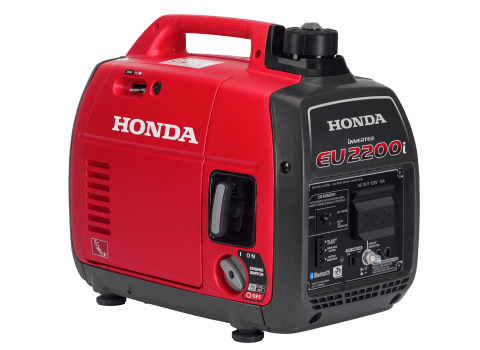
CR’s take: The small, portable Honda EU2200iTAG inverter generator is the best in its class among smaller inverter generators. Claimed output is 1,800 watts; claimed run time is 5 to 10 hours. We found this small generator to be reliable, producing high-quality power—without distortion—earning it a rating of Excellent for power quality. That’s important to avoid frying sensitive electronics, such as a charging smartphone. It’s designed to produce lower CO emissions and is also quiet. But it doesn’t include wheels, which you’ll need to buy separately at $150.
Ryobi RYi4022X
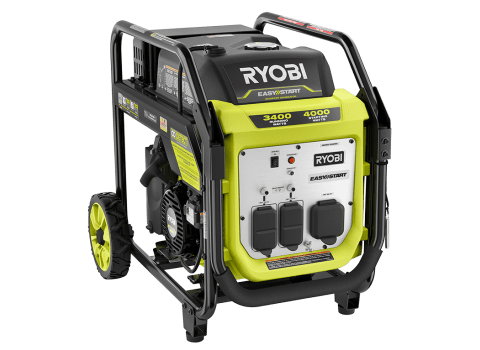
CR’s take: The moderate-sized Ryobi RYi4022X inverter generator is a stellar performer and the only generator in our ratings to earn an Excellent score for CO safety technology. It’s also a CR Best Buy because it’s less pricey than other top-rated inverter generators in our ratings, including the Honda EU3000iS with CO-MINDER and the Echo EGI-4000, both of which score Very Good for CO safety. Though this unit weighs just 85 pounds, it offers an impressive, 3,400-watt output and—conveniently—four power outlets. But it’s short on other features, such as electric start, fuel gauges, and a low-oil shutoff indicator light.
DeWalt DXGNR4000
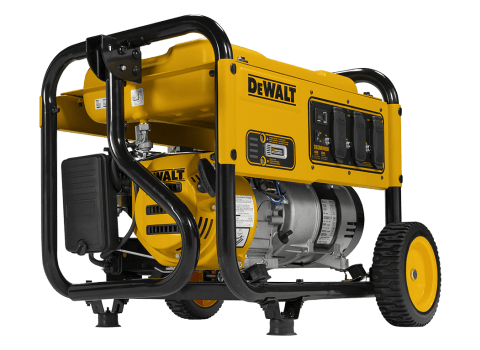
CR’s take: The moderately priced DeWalt DXGNR4000 traditional portable generator has a claimed output of 4,000 watts and a running time of 8 to 16 hours. We found it delivered more than enough wattage to power our test appliances and handled surges very well. And we found it easy to start and transport (for a portable), with some helpful features for starting and operating the generator. On the downside, it’s noisy.
Honda EU7000is with CO-MINDER
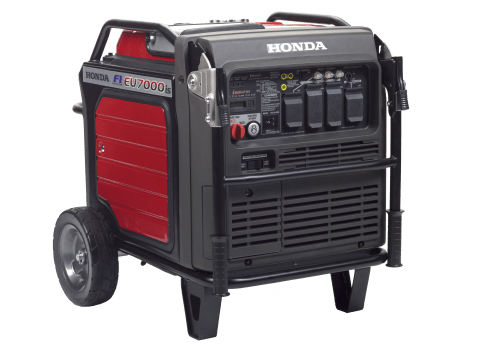
CR’s take: The Honda EU7000is with CO-Minder, with a claimed output of 5,500 watts, is the best large inverter generator in our ratings. It’s quiet, efficient, and exceptionally reliable in its ability to meet fluctuating demands for power—it earns a rating of Excellent for power quality. It uses 8 to 16 gallons of gas a day to power a typical household, about half the amount of fuel that some similarly sized traditional generators use to deliver the same amount of power.
Briggs & Stratton 30728
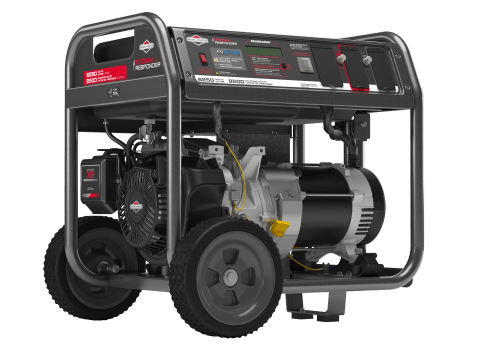
CR’s take: The Briggs & Stratton 30728 is a traditional, gas-powered portable generator with a claimed output of 6,250 watts. It delivered more than enough wattage to power our test appliances and handled surges very well. We found it easy to start and (for a portable) to transport. It also offers helpful features for starting and operating the generator, such as a low-oil shutoff that protects the engine from overheating if the oil level dips too low. But it’s fairly noisy, even from a distance. We recommend hearing protection if you’re standing close.
Generator Tips
Damaging storms can happen at any time. On the “Consumer 101” TV show, host Jack Rico learns from Consumer Reports expert Paul Hope how to avoid being left in the dark during a power outage.
Editor’s Note: A version of this article appeared in the October 2016 issue of Consumer Reports magazine.
More from Consumer Reports:
Top pick tires for 2016
Best used cars for $25,000 and less
7 best mattresses for couples
Consumer Reports is an independent, nonprofit organization that works side by side with consumers to create a fairer, safer, and healthier world. CR does not endorse products or services, and does not accept advertising. Copyright © 2022, Consumer Reports, Inc.

